Grow Lettuce at Home – imagine stepping outside your door and harvesting crisp, fresh lettuce for your salad, sandwich, or even a quick snack. No more trips to the grocery store, no more wilted greens in the fridge! For centuries, cultivating your own food has been a cornerstone of self-sufficiency and a connection to the earth. From ancient Roman gardens to the victory gardens of wartime, growing your own produce has always been a symbol of resilience and resourcefulness.
But let’s be honest, the idea of starting a garden can feel overwhelming. Where do you even begin? That’s where these simple, yet effective, DIY tricks and hacks come in. I’m here to show you that you don’t need a sprawling farm or a green thumb to enjoy the benefits of homegrown lettuce.
In today’s fast-paced world, knowing how to grow lettuce at home offers a welcome escape and a tangible reward. It’s not just about saving money; it’s about knowing exactly where your food comes from, reducing your environmental impact, and experiencing the pure joy of nurturing something from seed to salad. Plus, fresh lettuce from your garden tastes infinitely better than anything you can buy in a store. So, let’s dive in and unlock the secrets to a thriving lettuce patch, right in your own backyard (or balcony!).
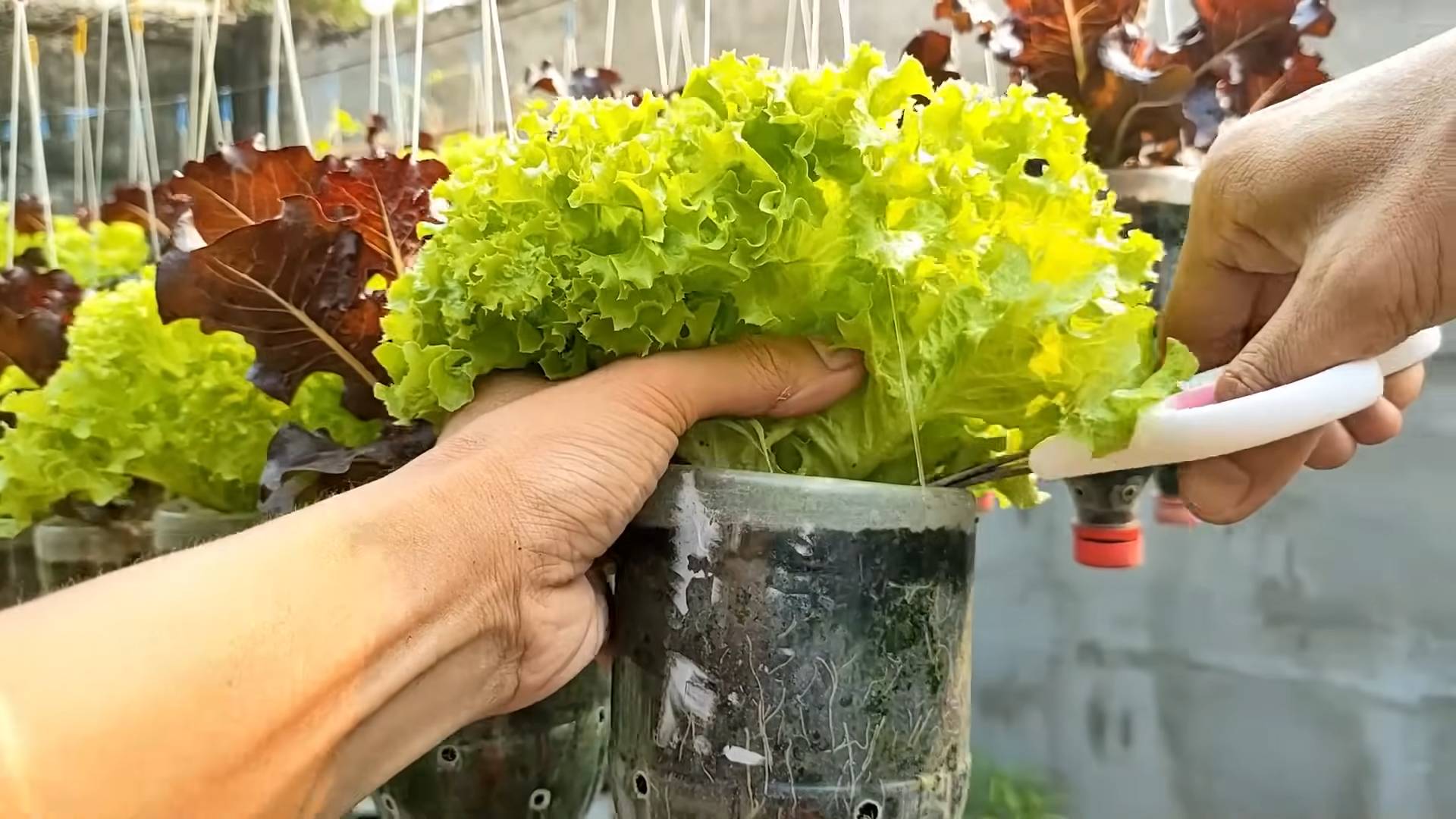
Grow Your Own Delicious Lettuce: A Beginner’s Guide
Hey there, fellow gardening enthusiasts! Ever dreamt of having fresh, crisp lettuce right at your fingertips? Well, dream no more! Growing your own lettuce is surprisingly easy, even if you don’t have a sprawling garden. I’m going to walk you through everything you need to know to cultivate a thriving lettuce patch, whether you’re working with a balcony, a small backyard, or even just a sunny windowsill. Let’s get started!
Choosing Your Lettuce Varieties
First things first, let’s talk lettuce types. There’s a whole world of leafy greens out there, and picking the right ones for your taste and growing conditions is key. Here’s a quick rundown of some popular choices:
* Loose-leaf Lettuce: These are the easiest to grow and harvest. They don’t form a head, so you can snip off leaves as you need them. Think varieties like ‘Black Seeded Simpson,’ ‘Red Sails,’ and ‘Oak Leaf.’
* Butterhead Lettuce: Known for their soft, buttery texture and delicate flavor. ‘Boston’ and ‘Bibb’ are classic butterhead choices.
* Romaine Lettuce: The star of Caesar salads! Romaine lettuce has long, upright leaves with a crisp texture. ‘Paris Island Cos’ and ‘Dark Green Romaine’ are great options.
* Crisphead Lettuce: This is your classic iceberg lettuce. While it’s a bit more challenging to grow than other types, it’s definitely doable with a little extra care.
Consider your climate! Some lettuce varieties are more heat-tolerant than others. If you live in a warmer climate, look for varieties that are specifically bred for heat resistance.
Getting Started: Seeds vs. Seedlings
You have two options when it comes to starting your lettuce: seeds or seedlings. Both have their pros and cons:
* Seeds: Starting from seed is more economical and gives you a wider variety to choose from. However, it requires a bit more patience and attention.
* Seedlings: Buying seedlings from a nursery is a quicker and easier way to get started. You’ll have a head start, but the selection might be limited.
I personally prefer starting from seed because I love the feeling of nurturing a plant from its very beginning. But if you’re short on time or just want a guaranteed success, seedlings are a great option.
Sowing Your Lettuce Seeds (or Planting Seedlings)
Okay, let’s get our hands dirty! Here’s how to sow your lettuce seeds or plant your seedlings:
Starting from Seeds:
1. Choose Your Container (or Garden Bed): If you’re starting indoors, use seed trays or small pots filled with seed-starting mix. If you’re sowing directly into your garden bed, make sure the soil is loose, well-drained, and amended with compost.
2. Sow the Seeds: Sprinkle the seeds thinly over the surface of the soil. Lettuce seeds need light to germinate, so don’t bury them too deep. Gently press them into the soil and cover with a very thin layer of vermiculite or seed-starting mix.
3. Water Gently: Use a spray bottle to mist the soil thoroughly. You want to keep the soil consistently moist, but not soggy.
4. Provide Light: Place the seed trays or pots in a bright location, such as a sunny windowsill or under grow lights. If you’re using grow lights, keep them on for about 14-16 hours per day.
5. Keep it Cool: Lettuce seeds germinate best in cool temperatures (around 60-70°F).
6. Thin Seedlings: Once the seedlings have developed their first true leaves (the second set of leaves), thin them out so that they’re spaced about 1-2 inches apart. This will give them enough room to grow.
Planting Seedlings:
1. Prepare the Soil: Whether you’re planting in a container or a garden bed, make sure the soil is loose, well-drained, and amended with compost.
2. Dig Holes: Dig holes that are slightly larger than the root balls of the seedlings. Space the holes about 6-8 inches apart for loose-leaf varieties and 8-12 inches apart for head-forming varieties.
3. Gently Remove Seedlings: Carefully remove the seedlings from their containers, being careful not to damage the roots.
4. Plant the Seedlings: Place the seedlings in the holes and gently backfill with soil. Make sure the top of the root ball is level with the surrounding soil.
5. Water Thoroughly: Water the seedlings thoroughly after planting.
Caring for Your Lettuce Plants
Now that your lettuce is planted, it’s time to give it the TLC it needs to thrive.
1. Watering: Lettuce needs consistent moisture to grow well. Water deeply whenever the top inch of soil feels dry to the touch. Avoid overhead watering, as this can lead to fungal diseases. Drip irrigation or soaker hoses are ideal.
2. Fertilizing: Lettuce is a relatively light feeder, but it will benefit from occasional fertilization. Use a balanced organic fertilizer, following the instructions on the package. You can also side-dress with compost or worm castings.
3. Weeding: Keep your lettuce patch free of weeds, as they can compete with the lettuce for nutrients and water. Gently pull weeds by hand, being careful not to disturb the lettuce roots.
4. Sunlight: Lettuce needs at least 6 hours of sunlight per day. However, in hot climates, it can benefit from some afternoon shade.
5. Pest Control: Keep an eye out for common lettuce pests, such as aphids, slugs, and snails. You can control aphids with a strong spray of water or insecticidal soap. Slugs and snails can be hand-picked or trapped with beer traps.
6. Bolting Prevention: Bolting is when lettuce plants send up a flower stalk and the leaves become bitter. This is usually triggered by hot weather. To prevent bolting, choose heat-tolerant varieties, provide afternoon shade, and water regularly. You can also harvest your lettuce frequently to encourage new growth.
Harvesting Your Lettuce
The best part! Harvesting your own lettuce is incredibly rewarding.
1. Loose-leaf Lettuce: You can start harvesting loose-leaf lettuce as soon as the leaves are big enough to eat. Simply snip off the outer leaves with scissors or a knife, leaving the inner leaves to continue growing. This is called “cut-and-come-again” harvesting.
2. Butterhead and Romaine Lettuce: Harvest these types of lettuce when the heads are firm and well-formed. Cut the head off at the base with a knife.
3. Crisphead Lettuce: Harvest crisphead lettuce when the heads are firm and dense. Cut the head off at the base with a knife.
Harvest in the morning! Lettuce is at its crispest and freshest when harvested in the morning, before the sun has had a chance to wilt the leaves.
Extending Your Lettuce Season
Want to enjoy fresh lettuce all season long? Here are a few tips for extending your lettuce season:
* Succession Planting: Sow new seeds or plant new seedlings every 2-3 weeks to ensure a continuous harvest.
* Cool-Season Growing: Lettuce is a cool-season crop, so it grows best in the spring and fall. In hot climates, you can grow lettuce in the winter under protection.
* Row Covers: Use row covers to protect your lettuce from frost and extreme heat.
* Shade Cloth: Use shade cloth to provide afternoon shade during hot weather.
Troubleshooting Common Lettuce Problems
Even with the best care, you might encounter some problems along the way. Here are a few common issues and how to address them:
* Yellowing Leaves: This can be caused by overwatering, underwatering, nutrient deficiencies, or disease. Check the soil moisture and adjust your watering accordingly. Fertilize with a balanced organic fertilizer. If you suspect disease, remove the affected plants.
* Wilting Leaves: This can be caused by underwatering, heat stress, or root rot. Water deeply and provide afternoon shade. If you suspect root rot, improve drainage.
* Bitter Leaves: This is usually caused by bolting. Choose heat-tolerant varieties, provide afternoon shade, and water regularly.
* Pest Infestations: Keep an eye out for common lettuce pests, such as aphids, slugs, and snails. Control aphids with a strong spray of water or insecticidal soap. Slugs and snails can be hand-picked or trapped with beer traps.
Enjoying Your Homegrown Lettuce
Congratulations! You’ve successfully grown your own delicious lettuce. Now it’s time to enjoy the fruits (or rather, leaves) of your labor. Use your homegrown lettuce in salads, sandwiches, wraps, or as a garnish. The possibilities are endless!
Store your lettuce properly! To keep
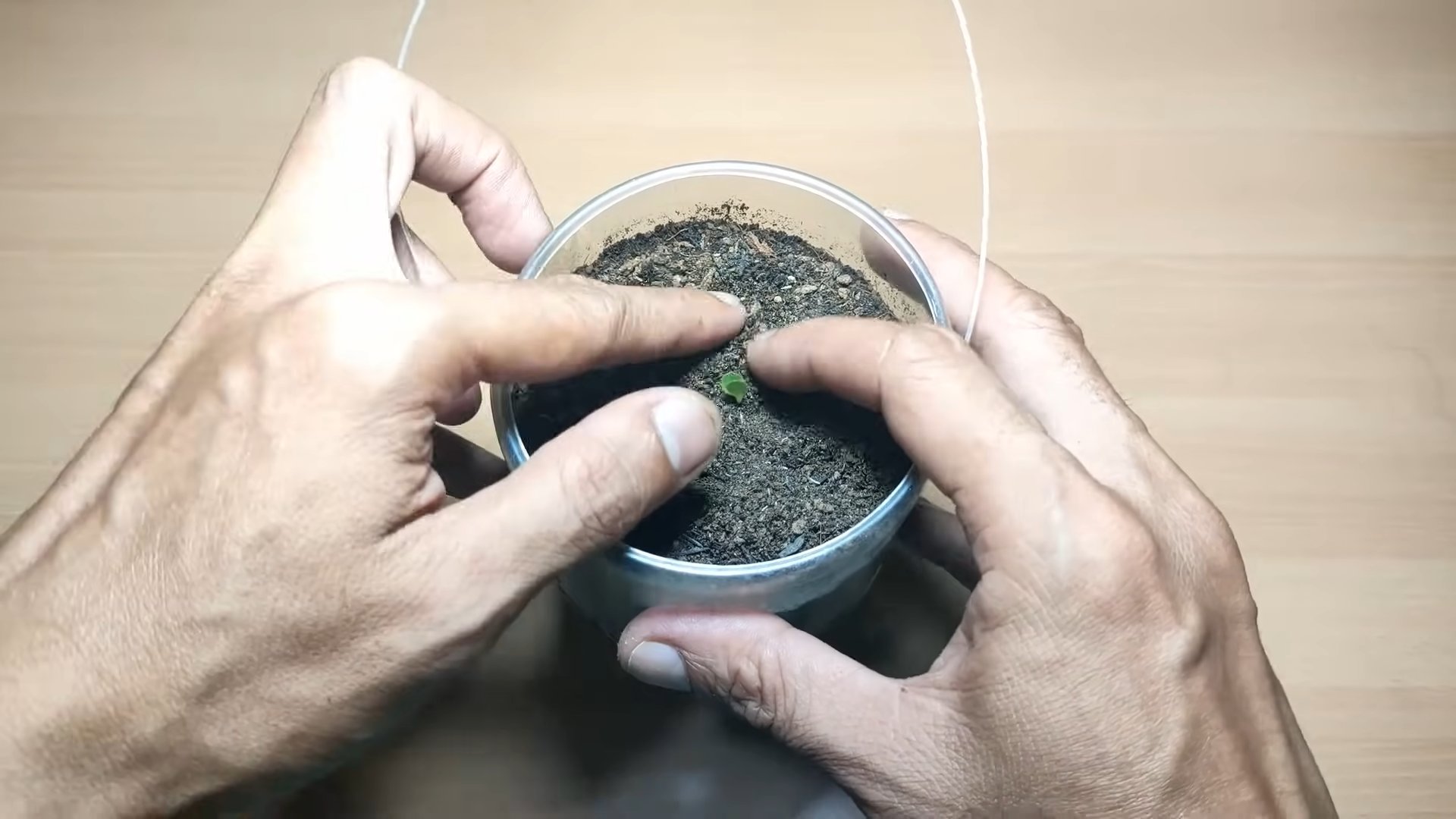
Conclusion
So, there you have it! Growing lettuce at home is not only achievable, but it’s also incredibly rewarding. Imagine stepping out into your garden or even just onto your balcony and harvesting fresh, crisp lettuce leaves for your salad, sandwich, or wrap. No more wilted, pre-packaged greens from the grocery store! This DIY trick is a must-try for anyone looking to elevate their culinary experience, reduce their environmental footprint, and connect with nature in a tangible way.
The beauty of growing your own lettuce lies in its simplicity and adaptability. You don’t need acres of land or a green thumb of mythical proportions. A simple container, some good quality soil, lettuce seeds, and a little bit of sunlight are all you need to embark on this exciting journey.
But the fun doesn’t stop there! Feel free to experiment with different varieties of lettuce. Romaine, butterhead, loose-leaf – the possibilities are endless! Each variety offers a unique flavor and texture, allowing you to create a diverse and exciting salad experience. You can also try companion planting. Herbs like basil and chives can deter pests and enhance the flavor of your lettuce. Marigolds are another excellent choice for pest control.
Consider starting your lettuce indoors, especially if you live in an area with a short growing season. This will give your seedlings a head start and ensure a bountiful harvest. You can also succession plant your lettuce, sowing new seeds every few weeks, to enjoy a continuous supply of fresh greens throughout the growing season.
Don’t be afraid to get creative with your container gardening. Upcycle old buckets, baskets, or even plastic containers into charming lettuce planters. Just make sure they have adequate drainage to prevent waterlogging.
Growing lettuce at home is more than just a gardening project; it’s a lifestyle choice. It’s about embracing sustainability, connecting with nature, and enjoying the simple pleasures of life. It’s about knowing exactly where your food comes from and taking pride in the fruits (or rather, the leaves) of your labor.
We encourage you to give this DIY trick a try. Start small, be patient, and don’t be discouraged by initial setbacks. Gardening is a learning process, and every mistake is an opportunity to grow (pun intended!).
Once you’ve harvested your first batch of homegrown lettuce, we’d love to hear about your experience. Share your photos, tips, and stories with us in the comments below. Let’s create a community of home gardeners who are passionate about growing their own food and sharing their knowledge with others. Let’s all enjoy the benefits of fresh, homegrown lettuce!
Frequently Asked Questions (FAQ)
What is the best time of year to plant lettuce?
Lettuce is a cool-season crop, meaning it thrives in cooler temperatures. The best time to plant lettuce is in early spring or late summer/early fall. In the spring, plant lettuce as soon as the soil can be worked. In the fall, plant lettuce about 4-6 weeks before the first expected frost. If you live in a warmer climate, you can grow lettuce throughout the winter.
What kind of soil is best for growing lettuce?
Lettuce prefers well-drained, fertile soil that is rich in organic matter. The ideal soil pH is between 6.0 and 7.0. You can amend your soil with compost, aged manure, or other organic materials to improve its fertility and drainage. If you’re growing lettuce in containers, use a high-quality potting mix.
How much sunlight does lettuce need?
Lettuce needs at least 6 hours of sunlight per day. However, in hotter climates, lettuce can benefit from some afternoon shade to prevent bolting (going to seed). If you’re growing lettuce indoors, use grow lights to provide adequate light.
How often should I water lettuce?
Lettuce needs consistent moisture to thrive. Water your lettuce regularly, especially during hot, dry weather. Aim to keep the soil consistently moist but not waterlogged. Check the soil moisture by sticking your finger into the soil. If the top inch of soil is dry, it’s time to water.
How do I prevent lettuce from bolting?
Bolting is when lettuce plants send up a flower stalk and the leaves become bitter. Bolting is usually caused by hot weather or stress. To prevent bolting, plant lettuce in a cool, shady location, water regularly, and harvest the leaves frequently. You can also choose bolt-resistant varieties of lettuce.
What are some common pests and diseases that affect lettuce?
Some common pests that affect lettuce include aphids, slugs, snails, and cutworms. Common diseases include downy mildew, powdery mildew, and leaf spot. You can control pests and diseases by using organic pest control methods, such as insecticidal soap, neem oil, or diatomaceous earth. You can also practice good garden hygiene by removing diseased leaves and weeds.
How do I harvest lettuce?
You can harvest lettuce leaves as soon as they are large enough to eat. There are two main ways to harvest lettuce: cut-and-come-again and head harvesting. With cut-and-come-again harvesting, you harvest individual leaves as needed, leaving the plant to continue growing. With head harvesting, you harvest the entire head of lettuce at once. To harvest lettuce, use a sharp knife or scissors to cut the leaves or head at the base of the plant.
Can I grow lettuce indoors?
Yes, you can grow lettuce indoors, especially during the colder months. Choose a sunny location near a window or use grow lights to provide adequate light. Use a high-quality potting mix and water regularly. You can also grow lettuce hydroponically indoors.
What are some good companion plants for lettuce?
Good companion plants for lettuce include basil, chives, garlic, onions, carrots, radishes, and marigolds. These plants can help deter pests, improve soil health, and enhance the flavor of lettuce.
How do I store harvested lettuce?
To store harvested lettuce, wash the leaves thoroughly and dry them with a salad spinner or paper towels. Store the lettuce in a plastic bag or container in the refrigerator. Lettuce will typically last for about a week in the refrigerator.
Is it possible to grow lettuce from scraps?
While you can’t regrow an entire head of lettuce from a single leaf, you can try to regrow lettuce from the base of a romaine lettuce head. Place the base in a shallow dish of water, ensuring the cut end is submerged. Change the water every day or two. After a few days, you should see new roots and leaves starting to grow. Once the roots are well-developed, you can transplant the lettuce base into a pot of soil. While this method may not produce a full-sized head of lettuce, it’s a fun way to experiment and get a small amount of fresh greens.
What are the nutritional benefits of eating lettuce?
Lettuce is a good source of vitamins A and K, as well as folate and fiber. It is also low in calories and fat. Different varieties of lettuce offer varying levels of nutrients. For example, romaine lettuce is higher in vitamins A and C than iceberg lettuce.
How can I use my homegrown lettuce?
The possibilities are endless! Use your homegrown lettuce in salads, sandwiches, wraps, soups, and smoothies. You can also use lettuce as a garnish or as a bed for other dishes. Get creative and experiment with different ways to use your fresh, homegrown lettuce.

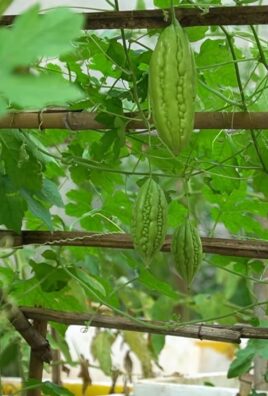
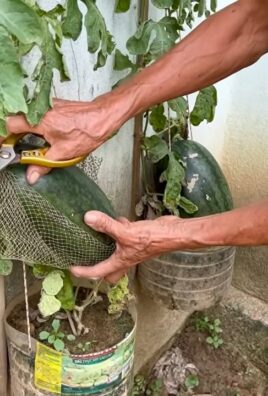
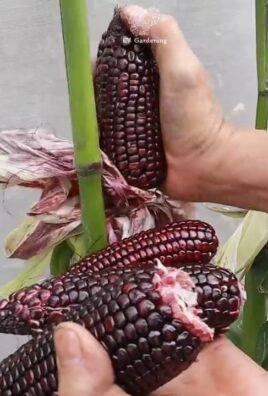
Leave a Comment